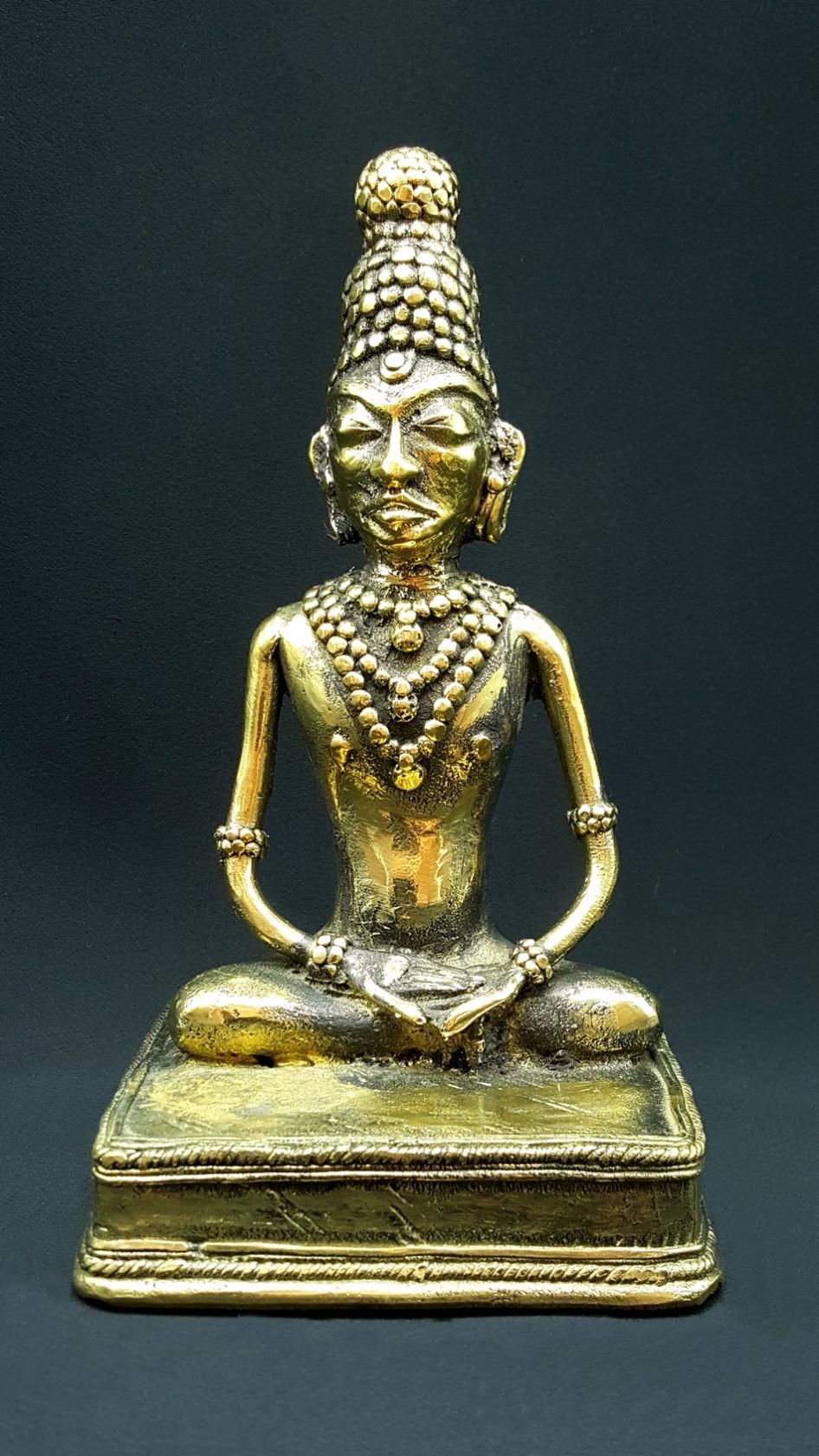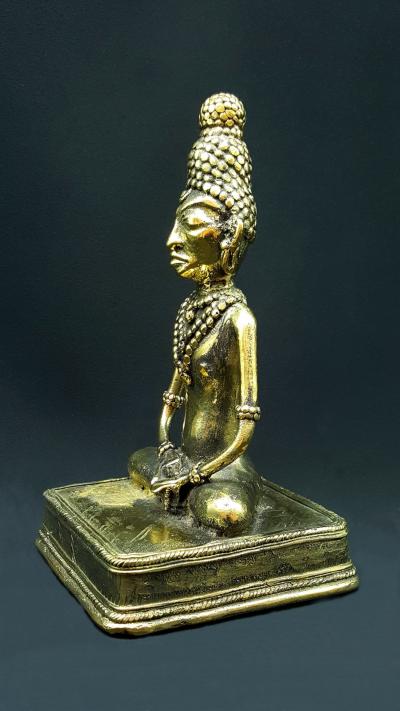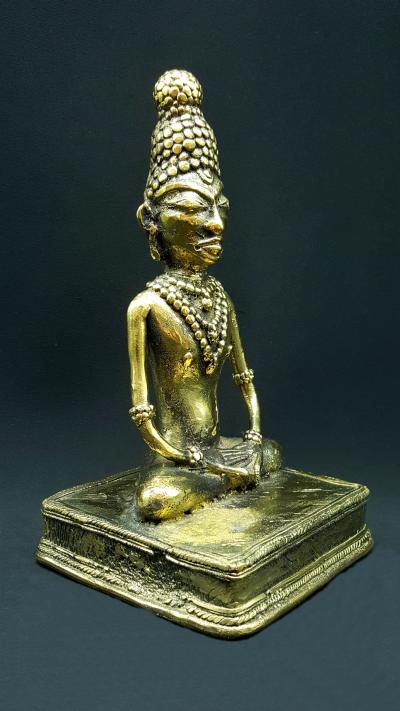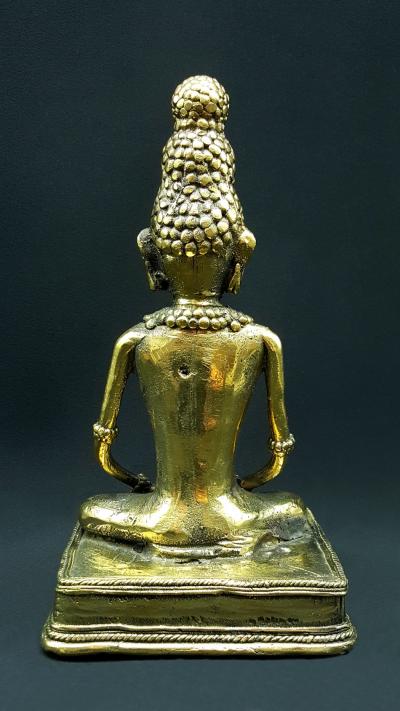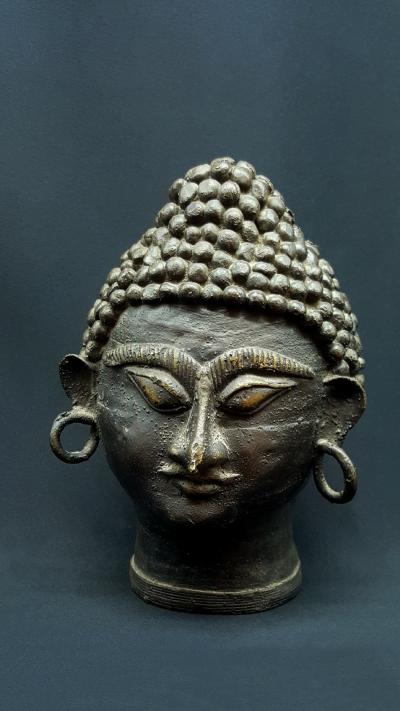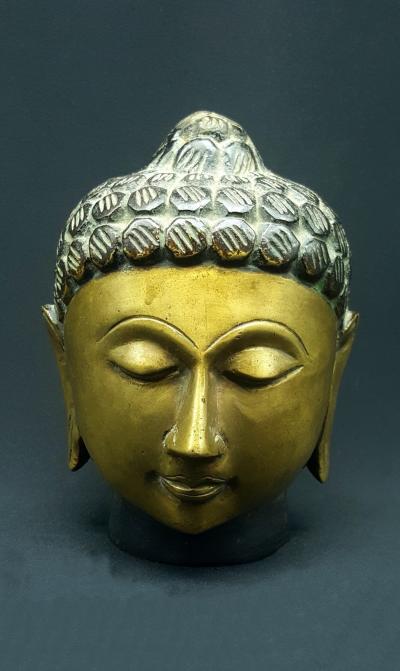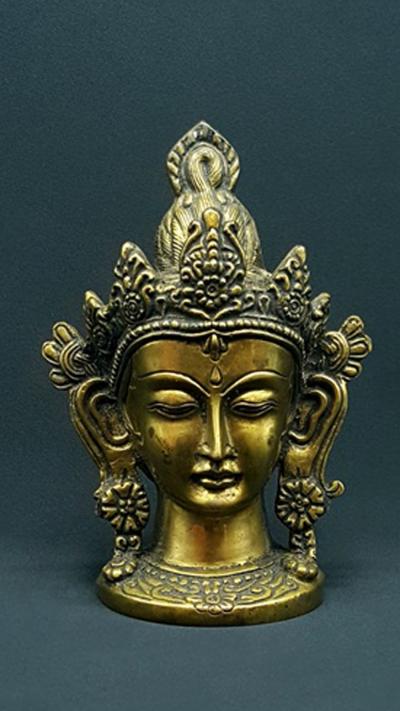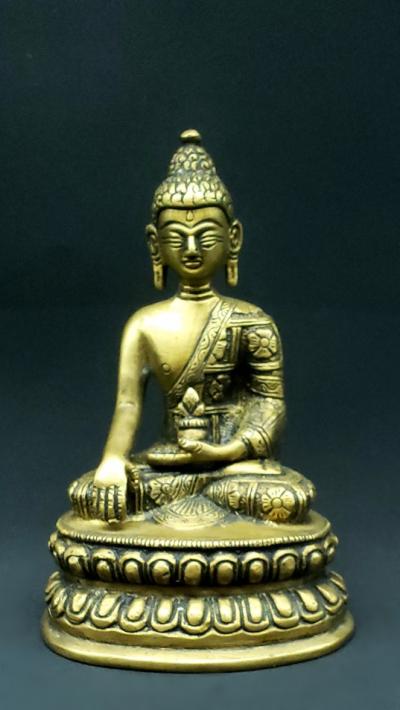Statue tribale de Bouddha en Padmâsana
La paix dans le lâcher prise
€160.00
Bouddha est ici représenté dans Padmâsana: la position du lotus, la plus célèbre âsana : Padma signifie lotus. Elle symbolise la méditation, un état d’intériorisation profonde. En savoir plus...
Hauteur : 14.5 cm
Poids : 1.190 Kg
Art tribal
Cire perdue
Origine : Chattisgarh - Inde
Livraison gratuite UE, Norvège et Suisse
Description
L'art Dokra : un savoir millénaire dans la fabrication de statues
Cet art traditionnel et artisanal n’a pas changé depuis des millénaires (+ de 4000 ans) et la technique utilisée est toujours celle de la cire perdue : un modèle grossier en argile est réalisé puis recouvert de cire par l’artiste qui va lui donner sa forme définitive avec ses détails. L’ensemble est à nouveau recouvert d’un mélange argileux puis chauffé dans un foyer ouvert où un alliage cuivreux sera coulé. Voir Blog.
Les objets produits par les artistes Dokra peuvent être de nature usuels : coupelle, bougeoir… des instruments de musiques (cuivres), ou bien artistiques tels que des bijoux, des animaux : chevaux, éléphants, tortues…, des statues d’hommes et femmes représentant des scènes de vies quotidiennes et des divinités hindous adoptées par les tribus : Ganesh, Lakshmi, …
Cette statue symbolise : la méditation profonde, atman darshan, soit la vision de l’absolu.
On retrouve facilement la technique de la cire perdue employée par les Dokras dans cette statue tribale de Bouddha. Cependant l'essence même du style remonte à l'époque Gupta avec la coiffure caractéristique faite de boucles de cheveux, l'Unisha au sommet (protubérance sur le dessus de la tête ressemblant un chignon) et les oreilles allongées (voir le Bouddha de Sarnath).
Le style Dokra de cette statue est aussi marqué par la présence de bijoux : des colliers et des bracelets alors que dans la représentation traditionnelle, l’absence de bijoux marque justement le passage du prince Siddharta à l’état de Bouddha (les oreilles allongées étant le signe que le Bouddha a renoncé à ses anciens attributs et ornements de prince).
Habillements Ce bouddha est totalement nu (excepté les bijoux), renforçant ainsi les notions de renoncement, de détachement et de lâcher prise, de paix qui se dégage de cette statue.
